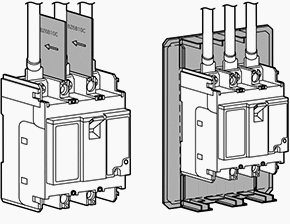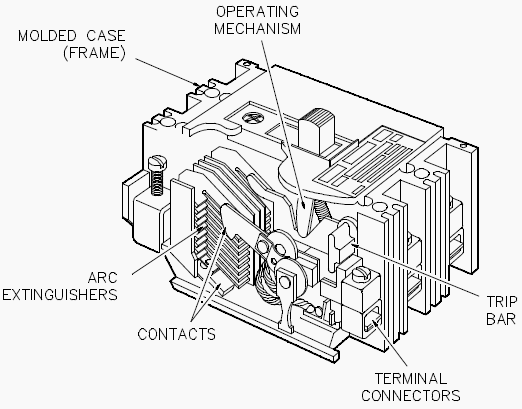
Electrical Preventive Maintenance of Air Circuit Breakers
Recommended minimum practice for preventive maintenance
Insulation
Remove and clean interphase barriers. Clean all insulating materials with vacuum and/or clean lint free rags. If it is necessary to use cleaning solvents, use only solvents recommended by the manufacturer.
Inspect for (early) signs of corona, tracking, arcing, or thermal or physical damage.

Insulation barriers (left: Interface barrier; right: Earth barrier)
Ensure that insulation is left clean and dry.
Contacts
Ensure that all contacts are clean, smooth, and in proper alignment. Ensure that spring pressures are maintained according to manufacturer’s specifications. On silver contacts, discoloration is not usually harmful unless caused by insulating deposits. Clean silver contacts with alcohol or silver cleaner using non-abrasive cloths.

Contact resistance tests using micro-ohmmeter (photo credit: ecmweb.com)
Manually close breaker to check for proper wipe, contact pressure, contact alignment, and to ensure that all contacts make at approximately the same time.
Older breakers equipped with carbon contactors generally require very little maintenance. Examine for proper pressure, deterioration, or excessive dressing which may interfere with their proper operation.
Draw-out contacts on the circuit breaker and the stationary contacts in the cubicle should be cleaned and inspected for overheating, alignment, and broken or weak springs. Coat contact surfaces with contact lubricant to ease mating (see manufacturer’s recommendations).
Arc Interrupters
Clean all ceramic materials of loose dirt and examine for signs of moisture, make sure the assemblies are clean and dry. Examine for cracked or broken pieces. Dirt and arcing deposits may be removed by light sanding — do not use emery cloth or wire brushes which may leave conductive residue behind. Repair or replace as necessary.
Examine arc chutes for dirt and/or dust accumulations and clean as necessary. Dielectric testing of arc shields may be recommended by the manufacturer. Check air puffer for proper operation.
Operating Mechanism
Inspect for loose, broken, worn, or missing parts (consult manufacturer’s schematics for required parts). Examine for excessive wear of moving parts. Observe that operating mechanisms function properly without binding, hanging, or without delayed action.
Ensure any lubrication is done according to the manufacturer’s specifications.

Figure 1 – Cutaway view of the molded case circuit breaker
Ensure mechanisms are clean, properly lubricated, and all bolts and screws are properly secured. Repair or replace as necessary.
Auxiliary Devices
Inspect operating devices for proper operation and general condition. Ensure all indicating devices are fully functional and properly set.

Auxiliary devices (aux. switch, alarm switch, shunt trip and unrevoltage trip device)
Protective relays and circuit breaker trip devices should be inspected and tested according to manufacturers’ specifications and applicable industry standards such as those issued by the Institute of Electrical and Electronics Engineers (IEEE) and the National Fire Protection Association (NFPA).
References:
- Standard for and electrical preventive maintenance (EPM) program – The Hartford Steam Boiler Inspection and Insurance Company
- Fuji Electric FA Components & Systems Catalogue